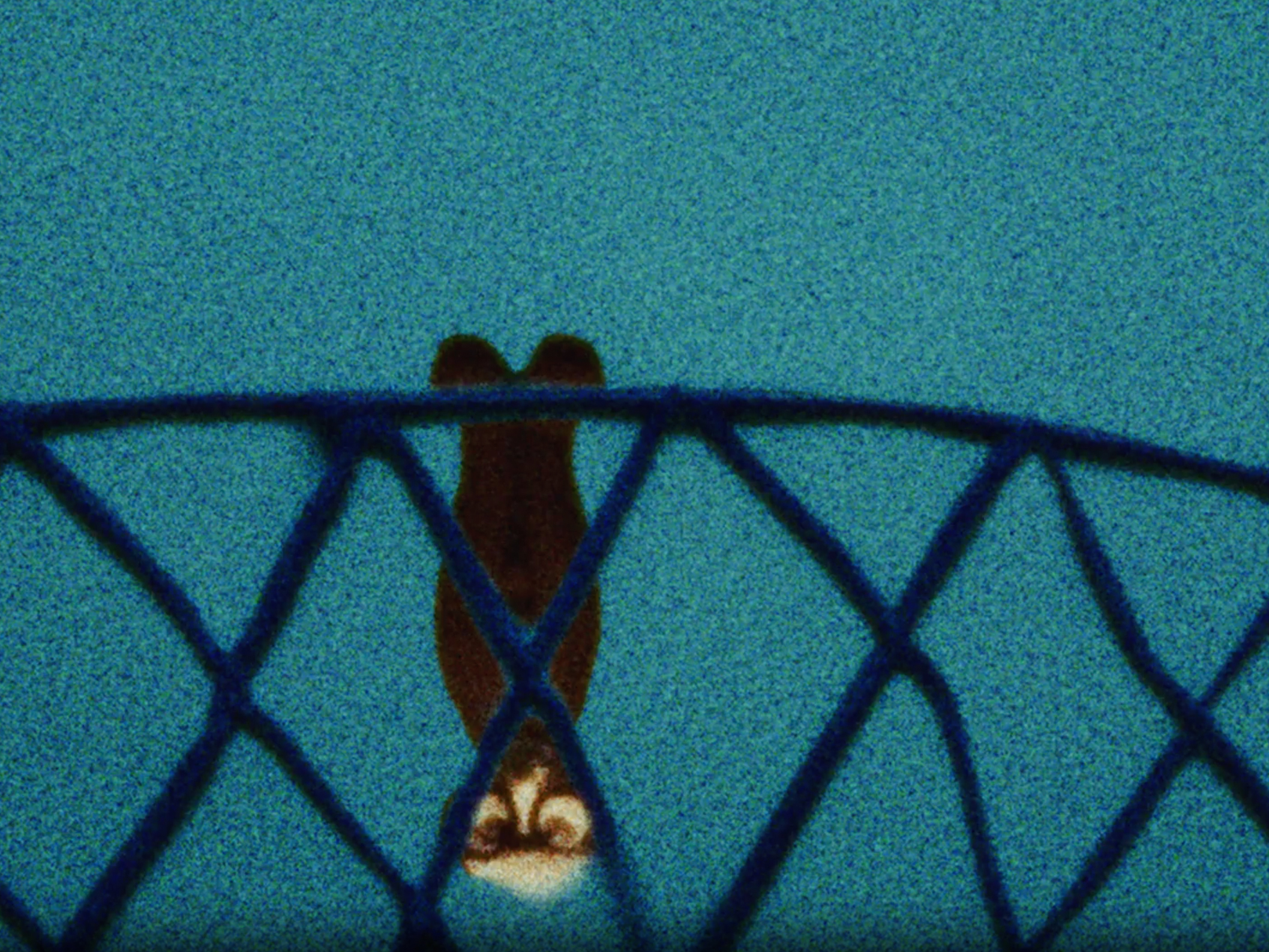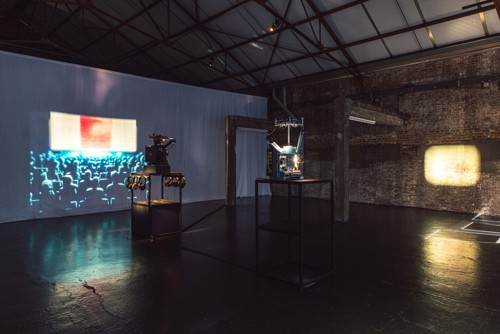Interview with Gernot Wieland: Confronting the Frailties of Recollection

Gernot Wieland is an Austrian artist based in Berlin whose films, drawings, lecture-
performances and installations comment on human notions of belonging within inherited
social, political and psychological processes.
Kisito Assangni (K.A.): Many contemporary artists see the aesthetic as a social and artistic construct where the shapes represent an emotion in innovative ways. What is aesthetic to you?
Gernot Wieland (G.W.): As a kid, I drew manically. As an adult, I finally saw the psychological dimension, the monstrosity, of a child who has made hundreds of thousands of drawings. I drew all the time, at breakfast, at school. As a kid I thought this was normal. I tried, and this often happens with children, to create a parallel world for myself through these drawings, one that contrasts with the reality I was facing. It wasn't a decision, but a necessity to make the drawings, to create this world. I mean, all my films look like a four-year-old made the drawings and plasticine sculptures and so on.
The fact that the drawings I make today are reminiscent a child’s is an allusion to the time when our understanding of life are shaped. On the other hand, I just can't draw any better (laughs). I think that's how I encounter aesthetics. It's like with actors. You first have to put on a costume of a character from a Shakespeare drama, and you naturally look ridiculous, but once you've overcome this embarrassment and immersed yourself in the play, this aesthetic also tells you a lot about the distribution of roles. Aesthetics or the decision in favor of a certain form of aesthetics then suddenly take on a psychological character, reveals this parallel world, and that's what I'm interested in.

Square, Circle, Square, Installation view, Argos, Brussels, 2023, Gernot Wieland
K.A.: Given your extensive exhibition history, what processes have to be carried out for
viewers to understand that an art object represents a feeling, a phenomenon or a concept?
G.W.: I believe, or at least I would like to believe, that anyone who watches my films will automatically recognize the processes of understanding what I want to say. The only process is to watch the film. I mean, isn' it funny that when you walk through an exhibition and you see that a film is 48 minutes long, the first thing you do is groan. You think, oh dear, 48 minutes is a very, very long time. I mean, I feel the same way and I work with film! But we also live in a time where many works of art have become a strange “You-see-it-you-get-it object”, a process that requires seconds. So, for me, the process is above all a deal with time and the promise of being well entertained. Well entertained does not mean surface, I am also well entertained by philosophy or mathematical problems, for example. In principle, I think about art like I simply think about rain. When it rains and I go outside, I expect to get wet. I expect to experience a feeling, a phenomenon or a concept when looking at art.

The Perfect Square, 2024, 08:01 min, 16 mm film/Super 8 film/HD Video, Gernot Wieland
K.A.: Is there an artwork of yours that stands out in this moment as being particularly
meaningful to you? Relating to the above, what does it mean to you to be authentic as an artist?
G.W.: Oh, the question of authenticity is so difficult. I deal a lot with memory, and we have learned from neuropsychology that memories can be created artificially and then be experienced as authentic on an emotional and intellectual level. I fine that you can only get closer to the truth with great exaggeration and lies.
I spoke earlier about my drawings. I need the drawings to narrate the absurdity, because language is too exclusive and tends to abolish the real absurdity. My drawings function like spotlights, bring another light to the story being told, sometimes offering another perspective, sometimes revealing the shadows within a text; sometimes my drawings are just hermetic, resisting all integration to a story, in that case they are almost like facts or like strange kinds of documentation recording nothing but their own existence. My drawings and images are sometimes more real than the narration in use in my films, but they come from or are a product of the narration.
That's the paradox: a lesser degree of truth (of authenticity) can produce a higher degree of truth, out of itself. That's the great thing about art. Anyway, to go back to your question, an artwork of mine that stands out in this moment? The meanings are constantly changing, not greatly, but always a little. Looking at my older works is also always a journey of discovery, but sometimes also a very uncomfortable one (laughs).
K.A.: From your perspective, what is the importance of art collecting?
G.W.: There were some serious hypochondriacs in my family. So I grew up with people who died all the time. I don't want to say that this traumatised me, but at least it led to me starting to collect books about incurable diseases and illnesses as a teenager. Now I mostly collect immaterial stuff, like ideas about the world, about art, about me. These ideas really belong to me, they are there, available at any time. I can make a connection between the ideas and material objects, for example objects that represent systems of power, and this connection is often the most important thing for me, perhaps it is similar with collected art objects?

The Perfect Square, 2024, 08:01 min, 16 mm film/Super 8 film/HD Video, Gernot Wieland
K.A.: What are you currently interested in and how does it feed into your creative thinking?
G.W.: I have been researching landscapes for a long time, for the simple reason that I come from Austria and the Austrian identity is very much defined by landscapes. For me, landscapes are charged with politics, social relations, etc. Landscapes can therefore be seen as psychological spaces, and the spaces have structures of oppression that can exclude and include and determine who is allowed to enter these spaces, these landscapes.
Capitalism also has a lot to do with the imitation of home, with seduction, and who doesn't want to be seduced, unfortunately this imitation always leads to suffering (mostly of others). Landscape is a cultural place, and I am currently working on a new film in which landscape and important works of Western art history undergo psychotherapy.
K.A.: In recent times, conjunctural artistic manifestations are everywhere: there is activist art to combat climate change, collective art to solve social problems, political art to reflect on the discomforts of society. What is your position around these examples? Do you have any moral or ethical responsibilities in your works?
G.W.: I can't judge my work, of course I'm not objective enough for that. On one level my work deals with structures of power, repression, anger, hatred, transference, the whole Sigmund Freud thing. Most importantly however, in my work I try to create empathy. And everyone has a responsibility, you can't put on your artist costume and pretend that the moral costume doesn´t fit you now.
K.A.: The influence of artificial intelligence (AI) on creativity and productivity is a
controversial topic in the art world. Have you experimented with AI art? How do you see
AI impacting the life of artists and the creative process?
G.W.: What I fear with AI is: today a stubborn, bad-tempered four-year-old child, tomorrow a boss.

The Perfect Square, 2024, 08:01 min, 16 mm film/Super 8 film/HD Video, Gernot Wieland
K.A.: French thinker Jacques Rancière wrote "When artists adopt other guises or
disciplines, are there alternative models of criticism or classification to which we should
turn?" How does this resonate with you? Any future projects?
G.W.: I'd like to say, “I'm just about to stop criticizing. Not that I don't think it's absolutely necessary, but it"s not my process at the moment.” But I try and with artworks, books, plays, music and dance, I prefer to focus on what kind of discomfort or desire it triggers in me. I like to judge with my body first, at worst, if neither discomfort nor desire arises, I might fall asleep. I'm currently on a residency in Corsica, I've been in an almost deserted village for weeks, hiking every day, and I've started talking to the cows. We are looking at a state of the world and politics that has become a nightmarish science fiction scenario where humanity is a joke. I actually want to make watercolors of the cows and withdraw completely to escape this madness because it's too depressing, but you know, “Just when I thought I was out, they pull me back in” (laughs). Future projects include a new film based on some of the thinking I mention above and also a theater piece.
His work has been shown in solo exhibitions at KH Künstler:innenhaus Bremen,Bremen; Argos Centre for audiovisual arts, Brussels; Belmacz Gallery, London; Kindl - Centre of Contemporary Arts, Berlin; Kunst Halle Sankt Gallen; Salzburger Kunstverein, Salzburg; Berlinische Galerie - Museum of Modern Art, Berlin.
Recent group exhibitions and screenings at Berlin Biennale, Museum of the Moving
Image, New York; Torrance Art Museum, Los Angeles; Kunstmuseum Bonn;
BIENALSUR, Buenos Aires; Steirischer Herbst Festival/Kunsthaus Graz; Hong-Gah
Museum, Taipei, etc.
Main Image: You do not leave traces of your presence, just of your acts 2025 16:21 min, Super 8 film/HD Video, Gernot Wieland
